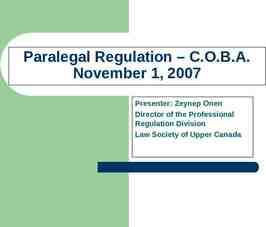Vertebrate Zoology(BIOL.2034)
89 Slides8.75 MB

Vertebrate Zoology(BIOL.2034)

UN AN A T A D R O H C S C I M T IS LU R Y E H T :P C E A N R IT O CH A R I E H DT

Introduction What is vertebrate Zoology? What are Chordates? What are the General characteristics of chordates? What are Distinctive features of chordates? Are there common features shared by chordates and non chordates ? Are Chordates advanced than non chordates? Where chordates come from? How?

Conti-- Vertebrate Zoolology: is a branch of Zoology that study about animals that have back bone in general. The word Chordate derived from two Greek words: – chorde string or cord – ata bearing Refers Notochord The phylum chordate is the largest groups in duetrostome phyla

Conti-- Chordates occupy a greater variety of habitats and have more complicated mechanisms of self maintenance than other group in the animal kingdom – They occupied the marine habitat at first time (especially the primitive chordates) then followed by freshwater, land and air. – Compared to invertebrate, the total numbers of chordate species are insignificant (3%)

General characteristics of chordates (features found in most but not in all) The presence of integument body covering of epidermis and dermis Have usually two pairs of jointed appendages Have highly developed segmented muscle system (attached to the skeleton of un-segmented trunk) to provide support and movement. Have complete digestive system. Have circulatory system consisting of a ventral heart of two to four chambers. (a closed blood vessel system of arteries, veins and capillaries; blood fluid containing red blood cells with hemoglobin and WBC) Have well developed coelom (body cavity) (mostly filled in internal organs and lined by the peritoneum).

Conti-– Excretory system consisting of paired kidneys. – Have 10 or 12 pairs of cranial nerves (with both motor and sensory functions; an autonomic nervous system in control of involuntary functions of internal organs). – Have endocrine system of ductless glands scattered throughout the body. – Have usually separate sexes (each sex containing paired gonads).

Distinctive features of chordates All chordates posses 4 distinctive features at some stage of their life history. These are: Dorsal tubular and single nerve cord Notochord Paired pharyngeal poaches (gill slits) Post anal tail – These features are always appearing at some embryonic stage, but they may be persistent or altered or may disappear in the later stages of the life cycle. – In Vertebrates, the notochord is replaced by back bone.

Conti---

Conti-- Dorsal tubular and single nerve cord It exists dorsally along the antero-posterior axis of the body. Embryologically, the nerve cord originates from the dorsal ectoderm. Develops dorsally above the notochord. In most spp, it modified into the brain anteriorly and spinal cord posteriorly The nerve cord serves for the integration and coordination of the body activities. Ectodermal origin – Q? How can you distinguish chordates nerve cord from invertebrates nerve cord?

Conti-- Notochord – It is an elastic rod-like structure extending the length of the body – situated immediately above the alimentary canal and just below the dorsal tubular nerve cord. – It is a cylinder rod that develops from the endoderm in all chordates. – It is formed from special type of vacuolated cells and remains covered by a sheath, known as notochord sheath – Modified to vertebrae and cover the spinal cord in vertebrates – Functions Allows flexibility along the long axis of the body, but does not allow compression

Conti-- Serve as hydrostatic organ and adds stability to the shape of the organism. Acts as a place of muscle attachment to allow lateral movements of the tail for swimming Its evolution seems general transformation from a sessile life style to a motile life style. Helps to classify the phylum chordate based on its structure

Conti-- Pharyngeal (gills) slits – During some point in the life time of all chordates, the wall of the pharynx is pierced by a longitudinal series of openings called the pharyngeal slits. In tunicates and cephalochordates, they used to capture small food particles. In fish-like vertebrates and juvenile amphibians, develops into gills that are organs of gas exchange. In adult amphibians and tetrapods, they transforms into the auditory tube and middle ear chamber.

Conti-- Post anal tail – It is a posterior elongation of the body (tail) extending beyond the anus. – It may persist or lost during development. – The tail contains skeletal elements and muscles: Provide a source of locomotion in aquatic species, such as fishes. In some terrestrial vertebrates, the tail also helps with balance, courting, and signaling when danger is near. In humans, the post-anal tail is vestigial, that is, reduced in size and nonfunctional

Characters Common to Chordates and Higher Non chordates Axiation Bilateral symmetry Triploblastic condition Eucoelom Metamerism: external metamersim in chordates restricted on a certain body parts Organ-system

Advancements of Chordata over Other Phyla Endoskeleton Efficient respiration Efficient Circulation Centralized nervous system Permanent locomotary appendages Extra-embryonic membranes Jaws Temperature regulation (Poikilothermic or homeothermic)

Activity1: Compare Chordates with Nonchordates base on the following features Features Symmetry Metamerism Grade of organization Germ layers Coelom Notochord Gut position Pharyngeal gill-slits Blood vascular system Heart Dorsal blood vessel Nervous system Nerve cord Reproduction Chordates Nonchordates

POSSIBLE INVERTEBRATE ANCESTOR OF CHORDATES There are two possible lines of descent that have been proposed about the origin of chordates (i). The Arthropod - Annelid- mollusk line (protostomia branch) – Annelids and arthropods are related to chordates because of their metameric segmentation Bilateral symmetry Central nervous system with brain Longitudinal nerve cord

Conti-- Similarities are analogy, not homology because of:– Exoskeletons vs endoskeletons. – Solid nerve cords vs hollow nerve cords. – Formation torsion in mollusca. – Different coelom formation (Protostomes vs. Deuterostomes).

Cont--(ii). Echinoderm - Hemichordate line (Deutrostomia branch) – This line is the most acceptable relative to other b/c echinoderms and chordates share several important characteristics. These are: Radial cleavage Coelom formed by enterocoelous process Tornaria larvae of hemichordate is similar to Dipleurula larvae of Echinodermata Biochemically, all deuterostomes use an identical phosphagen source (i.e creatine) in the energy cycle of their muscular contraction but arginine for protostomes

CLASSIFICATION OF PHYLUM CHORDATA It has two main groups (non taxonomically) – Protochordata (lower chordates) They lack a head and a cranium, so they are also known as Acraniata. – Common features of protochordates includes They are filter feeder Have colorless blood Lack capilaries Respiration is through gills and all are aquatic – Includes: Subphylum Hemichordata Subphylum Urochordata Subphylum Cephalochordata – Euchordata (higher chordates) Subphylum Vertebrata

Subphylum Hemichordata All hermichordates are marine. Some are solitary and slow moving, others are sedentary and colonial. Now regarded to be an independent phylum of invertebrates close to Echinodermata. Body structure: – Body is stout and unsegmented, and has a worm–like or vase–like – Three distinct regions namely proboscics, collar and trunk are present. – They are bilaterally symmetrical and triploblastic. – They have organ-system level of organization.

Conti-- Digestive tract is complete. Proboscis contains a hollow out growth from the gut, called stomochord and was regarded as notochord in the past. All feed on microorganisms and debris by filtering or ciliary mechanism. Respiration occurs by a pair to numerous pairs of gill slits or through the general body surface.

Conti--- e.g. Balanoglossus (Acorn worm)

Subphylum Urochordata Tunicates They are marine, mostly sessile, filter–feeders. Body is enclosed in a leathery test or tunic sheath, composed of tunicin (cellulose) so called tunicates. The notochord occurs only in the tail of larva and disappears in the adults called retrogressive metamorphosis. The nerve chord (neural tube) is present in the larva, but is replaced by a single dorsal ganglion in the adult. The gill slits persist in the adults Circulatory system is of open type. Excretory system is lacking. Asexual reproduction occurs by budding.

Conti---

Subphylum Cephalochordata The notochord extends up to the cephalic or head region. The nerve chord persists throughout the life, but no brain is formed. The gill slits are numerous and persist in the adults. Tail persists throughout the life They are commonly called lancelets, because of their similarities in appearance to a lancet (a small edged surgical knife).

Conti---

Subphylum Vertebrata This subphylum consists of vertebrate animals The term vertebrate derived from their vertebral column or the backbone (their axial endoskeleton). – Notochord is modified to vertebral column Those animals are also called as Craniata due to having skull.

Conti-- Vertebrates are mainly divided into two main groups due to the absence and presence of jaw. – Jawless vertebrates Agnatha Class Ostracoderm extinct fishes Class Cyclostoma extant fishes (lambrey and hag fishes) – Jawed vertebrates Gnathostomata Superclass Pisces: – Class Placodermi-extinct fishes with primitive jaws – Class Chondrichthyes-Cartilaginous sharks, rays and skate – Class Osteichthyes-bony fishes

Conti-- Super classTetrapoda – Class Amphibia-frogs, toads, salamanders – Class Reptilia-turtles, lizards and snakes – Class Aves-birds – Class Mammalia-mice, whales, men

UNIT TWO: PRIMITIVE FISHES

2.1.Agnatha Agnathans consists of: – Extinct class ostracoderm and – Extant classes or living members such as Hagfish (myxini) about 32 species Lamprey (cephalaspidomorphi) about 41 sp

Conti-- General characteristics of class Ostracoderm: – They had no jaws and no pectoral or pelvic fins but had only median fins – Armoured fishes or bony-skin fishes The head was encased in a solid shield made of broad bony dermal plates The rest body was covered with smaller bony scales – The first vertebrates to possess a lateral line system (sense organ that used to detect movement and vibration in the surrounding water as well as inner ear with 2 semicircular canals). Why were they so heavily armoured ? – The heavy exoskeleton(armoured plate) served as a protection against the giant scorpion-like arthropods

Conti---

Conti-- General characteristics of lampreys and hagfish – No jaw – No paired appendages or fins – No scales in their skin – Body is elongated, cylindrical – Mouth is ventral or terminal but circular – Have two chambered heat (1 atrium and 1 ventricle). – Have variable body temperature (poikilothermic). – Blood with WBC and nucleated circular RBC.

Conti--– 7 pairs of gills in lamprey and 5 to16 paired gill in hagfish – Gonads are single and ductless – Feeding is by rasping the tissue on large preys Q, What is the difference between lamprey and hagfish?

Conti--Features Habitat Lampreys Marine as well as freshwater Hag fish Exclusively marine, burrowing in sand Parasitism Externally parasitic or non parasitic species Behave as internal parasites Feeding Rasp away flesh and suck out blood of host fishes Primarily scavengers, burrowing into dead Breeding Anadromous, (migrate to fresh water rivers and streams for spawning) Spawn on ocean floor Mouth position Ventral Terminal Brain Cranial nerves Poorly developed 8 pairs present Better developed 10 pairs present

2.2. Gnathostoma: Jawed Vertebrates Basically, they have: – Jaw and jaw suspension – Additional single fins and paired fins – Different type of scales Jaws are very important for: – Feeding – Defense – Reproduction Jaws were evolved from gill arches – Gill arches are structures that support and keep the gill from closing or collapsing

The Evolution of Jaws in Fish (Agnathan vs Gnathostome)

Jaw suspension Jaw suspension means the attachment of the lower jaw with the upper jaw or skull for efficient biting and chewing. There are 4 types of jaw suspension: – Autodistylic: The upper jaw connected to the skull by a ligament, hyoid arches remain free. It is the characteristics of acanthodians and other extinct fish. – Amphistylic: the upper jaw and the hyomandibula attached to the cranium. The jaw articulate to the skull both directly and by way of the hyomadibula. It occurs in earliest fish.

Conti--– Hyostylic (Holostylic): hyomandibula connects upper jaw with skull. It is common in living species (elasmobranchea and some bony fish). – Autostylic: The upper jaw directly connected to the skull without any connecting device, thus the lower part of the cranium is the jaw. It is more flexible to open and close and it occurs in teleosts, Dipnoan.

Conti---

Fish Fins: Types and function The fins are the most distinctive features of fish Fins are membranous or webbed processes internally strengthened by radiating and the dermal fin rays. A fin can contain: – only spiny rays – only soft rays or – a combination of both. If both are present, the spiny rays are always anterior Spines are generally stiff and sharp. Rays are generally soft, flexible, segmented, and may be branched.

Conti-- Types of fins : – Single type fins Dorsal fin: are located on the and serves to protect the fish against rolling and assist in sudden turns and stops. A fish can have up to 3 dorsal fins. Caudal fin: is the tail fin, located at the end of the caudal peduncle Anal fin: located on the ventral surface behind the anus Adipose fin : found on the back behind the dorsal fin and just forward of the caudal fin Fin lets: are small fins, generally behind the dorsal and anal fins

Conti--– Paired fins Pectorial fins: are located on each side usually just behind the operculum, and homologous to the forelimbs of tetrapods. – Used for the creation of the dynamic lifting force that assists. Example: shark in maintaining depths and enables the flight for flying fish. Pelvic fins: located ventrally posterior to the pectoral fins. located ventrally posterior to the pectoral fins – help balance the fish, keep it level, and prevent it from rolling from side to side.

Conti--Fin lets

Conti--- Types caudal fins based on the status of vertebral column at the tail: – Protocercal Type: When the vertebral column extend straight to the tip of the tail and the caudal fin is divided equally. It is the most primitive type This type occurs in modem cyclostomes Isocercal: is very much elongated and symmetrical (E.g in Chimaera)

Conti--– Diphycercal type It has lost the terminal upturned part of the vertebral column, and the vertebral column does not reach the end. It is similar to protocercal type but the vertebral column does not reach the end.

Conti--– Heterocercal type: The vertebrate column bends upward and making the fin more asymmetrical. That is the caudal fin is divided into a narrow long dorsal lobe and a broader short ventral lobe. It is the characteristics of bottom feeders with ventral mouth and without swim bladder e.g elasmobranches (sharks, Skates and Rays).

Conti-- The strokes of larger dorsal lobe in swimming serve to direct fish towards bottom – Hypocercal type: The opposite of heterocercal condition The vertebral column terminates into a larger ventral lobe Hypocercal caudal fin is peculiar to flying fish, some primitive fishes and (fossil agnatha) ostracoderms. In flying fish (Cypselurus), the larger ventral lobe enables the fish to attain maximum speed for gliding as it leaves the water.

Conti--– Homocercal: The advanced and most common type of caudal fin The terminal part of the vertebral column is bent upwards but the dorsal lobe of the caudal fin is lost during development and the ventral lobe divides into two equal parts so that the caudal fin appears symmetrical externally rather than internally It is the characteristics of fish with terminal mouth and with swim bladder. E. g Teleosts.

Conti----

Type of homocercal fin

Types of fish scales In many vertebrates, exoskeleton covering of the body is made of two types of scales – Epidermal scale: derived from the malpighian layer of epidermis. They are well developed in terrestrial vertebrates such as reptiles, birds and mammals. – Dermal scales: Are mesenchymal in origin and developed in fish Are small, thin, confide, calcareous or bony plates, which fit closely together or overlap.

Conti-- There are five types of dermal scales: – Cosmoid scale Do not occurred in living fish, Are the characteristics of certain osracoderms and placoderms and extinct sarcoptergians – Placoid scales Are the characteristics of elasmobranchians only. Placoid scales are closely set together in skin giving sandpaper like quality. – Ganoid scales (Rhomboid) Are thick usually rhboid or dimond shaped They are the characteristics of chondrichians (polypteres, asipens and holostians. So that these fish are called gamoid fish.

Conti--– Cycloid scale Are thin flexible transparent plates Circular in outline, thicker in the center. These scale used to determine the age of the fish. Found in lung fish, some holosteans (Amia) and the lower teleosteans such as carp and cod. – Ctenoid scales: Are the characteristics of modern higher teleosts such as perch, sunfish and flounders. It is a small and comb like.

Conti---

Class Placoderm Placoderms were known as armored fish or pale skinned fish They combined the heavy boney armor of the osracoderm with powerful jaw and efficient fins Jaws were found in all which originate from the first pair of gill bares (mandibular arch) in front of the first gill slits Their jaws were immovable, bound to cranium or the rest of the head. They had no teeth of modern type. Paired fins in most were found.

Conti---

UNIT THREE: ADVANCED FISH

3.1 Class Chondrichthyes (Cartilaginous fish) The first extant jawed fish It comprises about 850 living species They contain two subclasses – Subclass Elasmobranches and – Subclass Holocephala

General Characteristics Cartilaginous fish Are mostly marine and predaceous (predators) Body shaped: – Fusiform, laterally compressed (shark), – Dorso-venteraly flattened (skates and rays) Body size varies – From 1 m (Dog fish, shark) to 17 m (large whale sharks) They have both median and paired fins supported by fin rays Their endoskeleton is entirely cartilage; notochord persists in adults between the adjacent vertebrae.

Conti-- Skin is covered by placoid scale or naked in some groups Mouth is Ventral with placoid modified teeth, stomach is J-shaped with spiral intestine Respiration is by 5-7 paired gills, No swim (air) bladder, no lung Heart 2-chambered (1 auricle and 1ventricle) – Sinus venosus and conus arteriosus present – Both renal and hepatic portal systems present – Temperature variable (poikilothermous).

Conti-- Kidneys opisthonephric – Excretion ureotelic (high concentrations of urea and trimethylamine oxide in blood) – Cloaca present Brain with 10 pairs cranial nerves Sexes separate – Gonads paired – Gonoducts open into cloaca – Fertilization internal

Subclass Elasmobranches 5 - 7 gill openings plus spiracle anterior to first gill Upper jaw not attached to braincase Teeth deciduous and continually replaced Claspers present in males (modified from pelvic fins) internal fertilization Includes sharks, skates, rays and sawfishes

Order Squaliformes (Selachi) True or modern Sharks – (Whale shark, Hammerhead shark, white shark, tiger shark, Zebra shark, Dogfish shark) Pelvic fines bear claspers in males Mouth is Ventral or sub terminal in most

Conti---

Conti----

Conti---

Conti-- Sharks are fast swimmers b/c – Having fusiform shape for penetrating the aquatic medium – Having hetrocercal caudal fins for forward movement unlike paired fins – Lighter body due to having cartilagenous skeleton and placoid scale – Liver contains high amount of oil that increase buoyancy – Live in marine b/c it is more dense than fresh water

Order Pristiophoriformes : Sawfish

Order Rajiformes (Batoidea) Includes Skates and Rays – Have dorso-ventral flattened in shape – Have dorsal eyes which is unusual in vertebrates – Have spiracles located dorsally for the entrance of water – Defense mechanism of sting rays Spines associated glands at caudal fin – Electric rays produce electric current

Conti---

Subclass Holocephala Includes only order Chimaeriforms – Upper jaw fused to braincase (uncommon in fish) – Flat, bony plates instead of teeth – 4 pairs of gills enclosed with fleshy operculum – Mixed diet (Seaweed, mollesca, Echinoderms) – Resemble to rat and commonly called rat fish – Large head and long tail – Large pectoral fins – Use claspers for mating and Viviparous (uncommon in fish)

Conti---

3.2 Class Osteichthyes (Bony fish)

General characteristics of Class Osteichthyes 95% of all fish are bony fish They inhabit all water bodies (fresh, brackish and marine) They vary greatly in shape They have both median and paired fins supported by fin rays of cartilage or bone – Tail is homocercal – Relay for locomotion more on their pectoral fines than their tail.

Conti-- Skin have many mucous glands with dermal scale of 3 types – Ganoid – Cycloid and – Ctenoid which are fully overlapped by a delicate mucous epidermis Their endoskeleton is bone but cartilage in sturgeons and some others Their mouth is terminal in most and subterminal in some. – Jaws usually with teeth but some are toothless – Jaw suspension in most is hyostylic and in some lower fish autostylic – Stomach may be J shaped and cloaca lacking but anus present

Conti-- Respiration is by pairs of gills supported by bony gill arches. – covered by operculum Air or swim bladder present with or without duct – connected to the pharynx except in a few bottom dwelling species in which they have been secondary lost – The air bladder mainly serves in buoyant, but it is lung like in some (Dipnoi).

Conti-- They have closed circulation in most single but double in dipnoi – It consists of venteraly located 2 chamber heart, sinus venosus and conus arterioles – Blood contains oval nucleated RBC – Have variable body temperature (poiklotherms) They excrete by mesonephric kidney – Excretion is ureotelic – The body fluid of bony fish is hypotonic to sea water and requires active constant osmoregulation They have 10 pairs of cranial nerves

Conti--- Their sense organ is with well developed lateral lines, internal ear with three semicircular canal, the nostrils are located on the snout Sexes are separated – Sex may be reversal in some Male to female (protandrous) Female to male (protogynous) – Gonads paired, genital aperture present, fertilization external. – Mostly they are oviparous

Classification of bony fish Subclass actinoptergii – Paired fins thin, broad, without fleshy and supported by dermal fin rays. – One dorsal fin, may be divided. – Caudal fin without epichordal lobe. – Olfactory sacs not connected to mouth cavity. – Popularly called ray-finned fishes

Conti--- Consists of three super orders: – super order Chondrostei –Primitive bony fish Order polypteri forms- Bichir – Dorsal fin of 8 or more finlets – Ossified skeleton Order acipenseriforms-Acipenser (sturgeon), polyodon (paddle fish) – Scaleless and skeleton is largely cartilaginous – Super order Holostei: Mouth opening small. Ganoid or cycloid scales. Tail fin heterocercal. Intermediate ray-finned fish, transitional

Conti--Srugeon Bichir Paddle fish

Conti-- Order Amiiforms-Amia (bow fish) – – – – Thin, overlapping cycloid scales Snout normal, rounded Long dorsal fin Example : Amia (Bowfin) Order semionotiformes – Scales rhomboidal ganoid in oblique rows. – Snout and body elongated. – Example : Lepidosteus or Lepisosteus (Garpike)

Conti--- Bowin fish

Conti-- Super order Teleosts (complete bone) Mouth opening terminal, small. Scales cycloid, ctenoid or absent. Tail fin mostly homocercai Spiracle is lost Spiral valve in the intestine absent. Conus arteriosus greatly reduced The most diversified bony fish group

Conti-- Subclass Sarcoptergii (flesh fined fish) – Order crossopterygii-latimeria and – Order Dipnoi-lung fish (Neoceratodes, protopterus, lepidosiren) L Latimeria chalumnae African lung Fish (Protopterus annectens)






